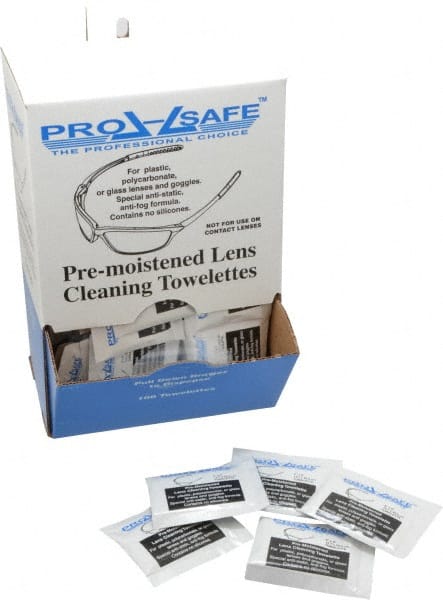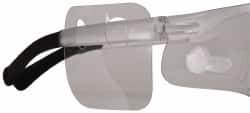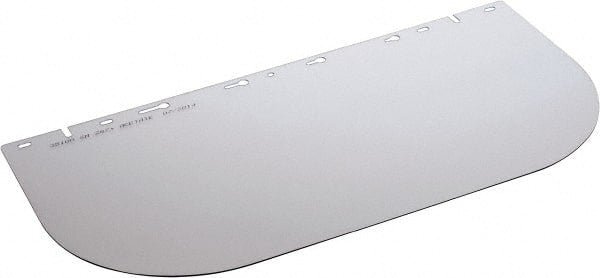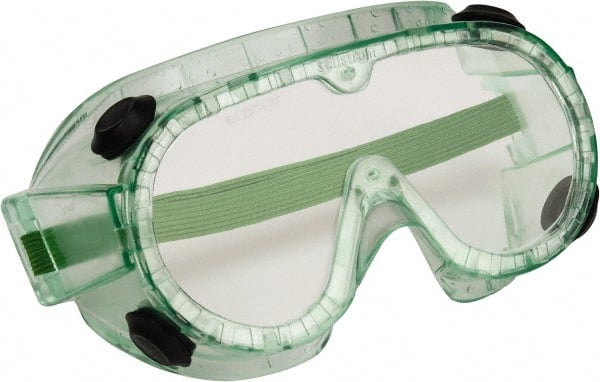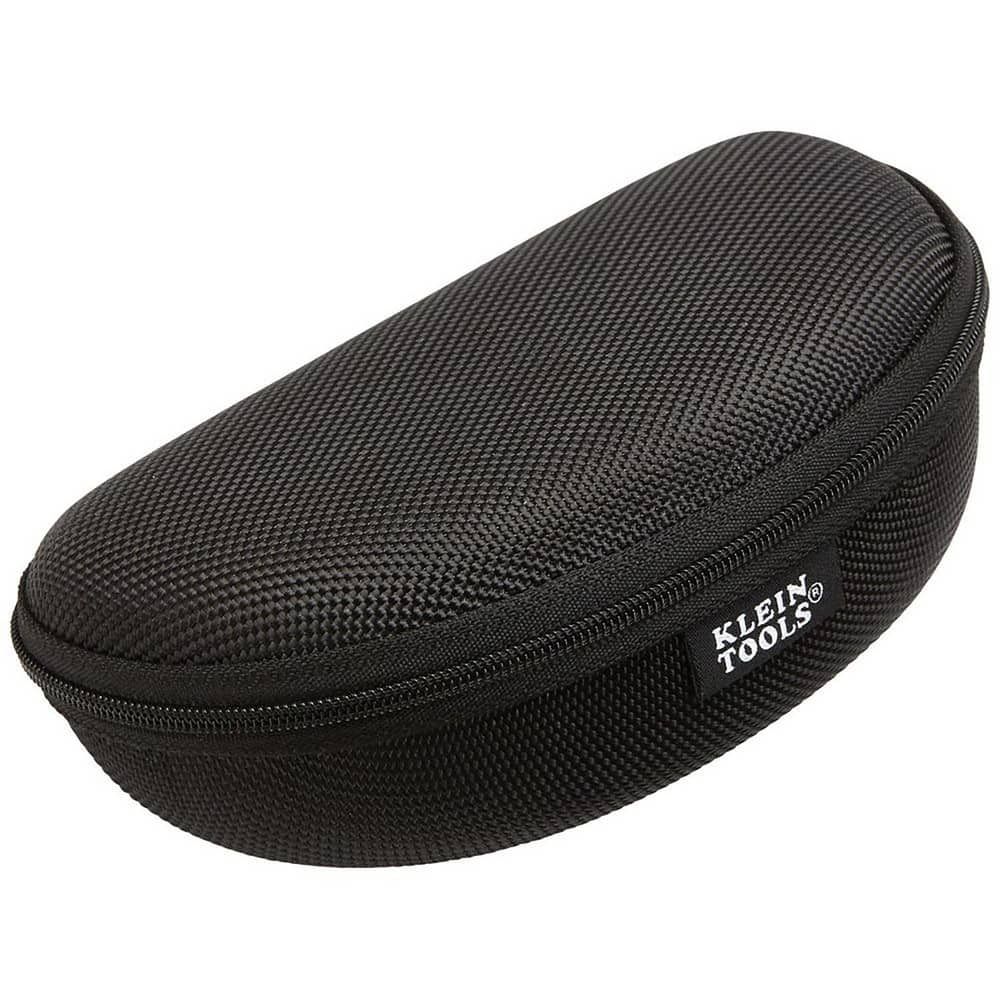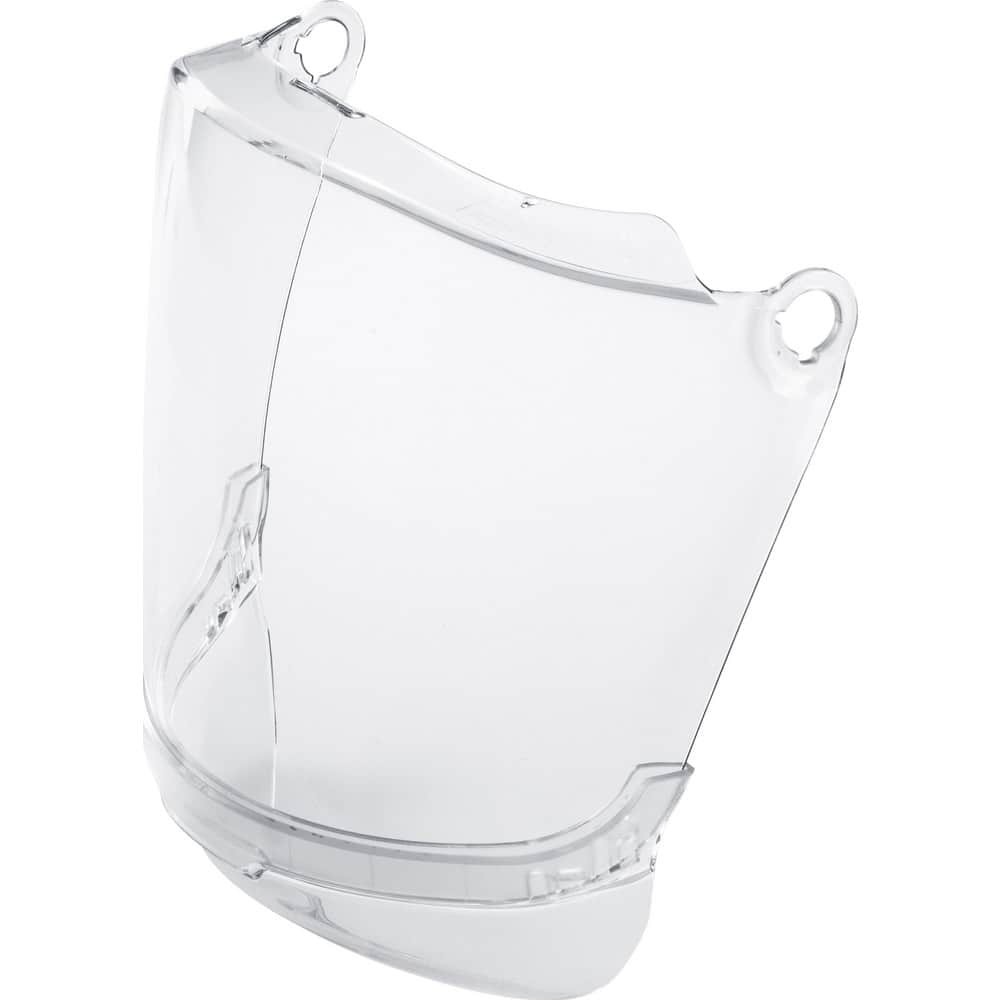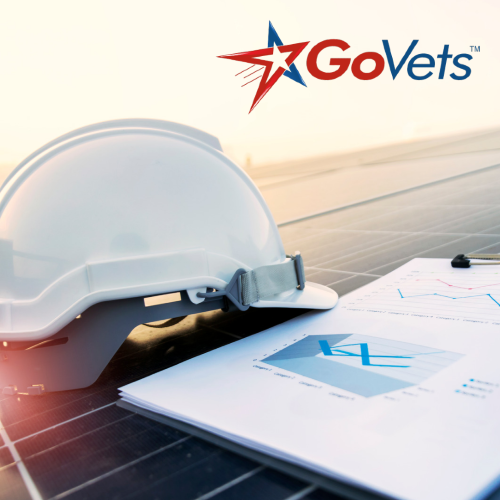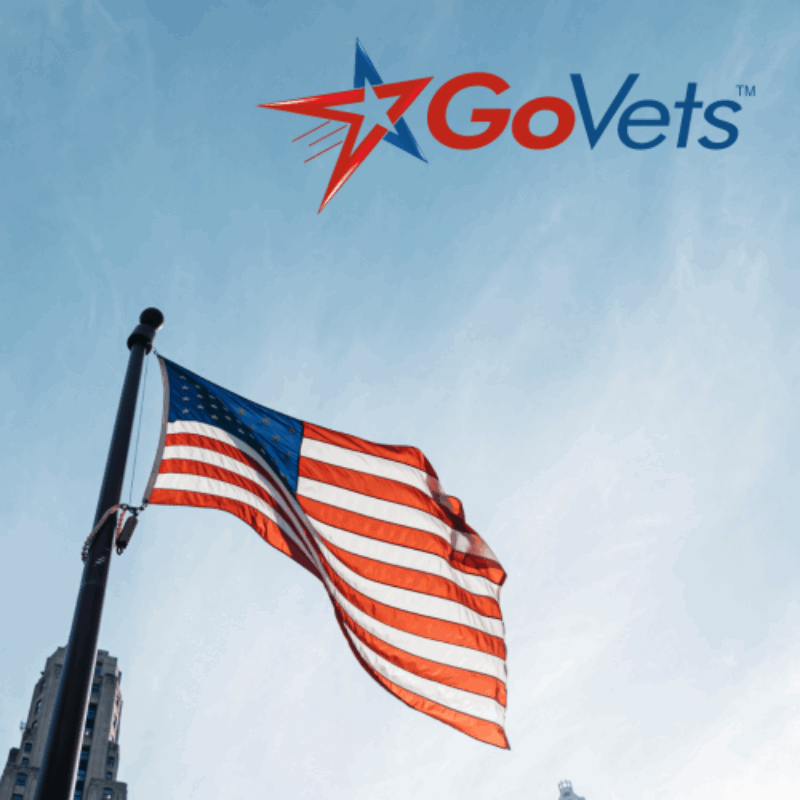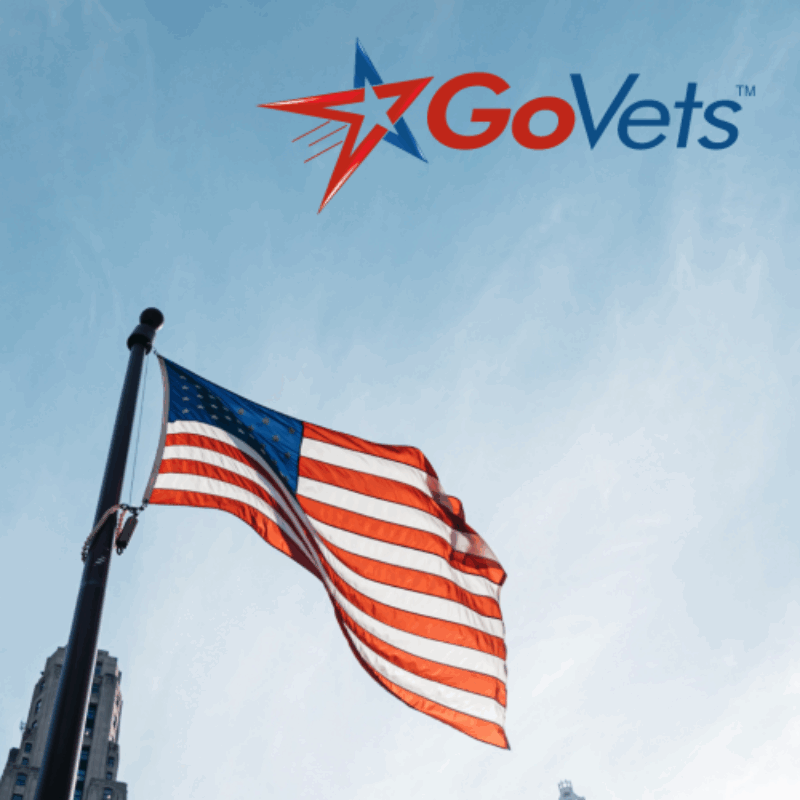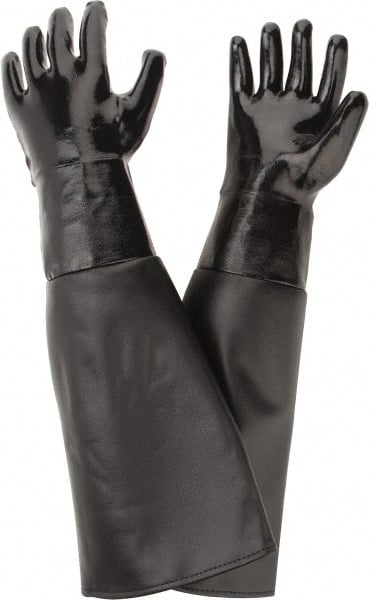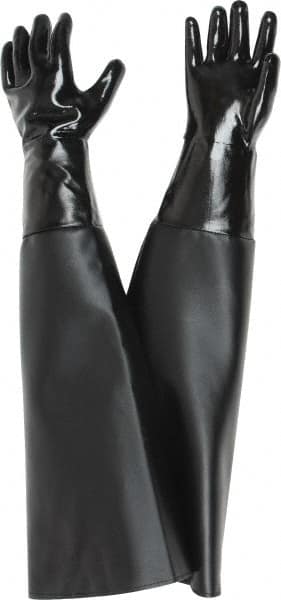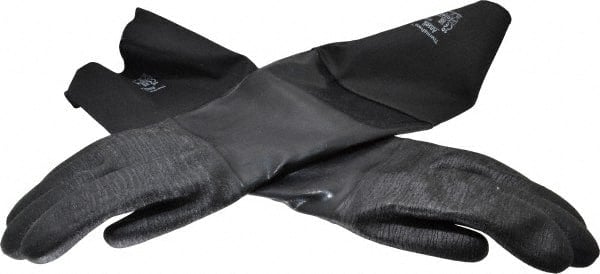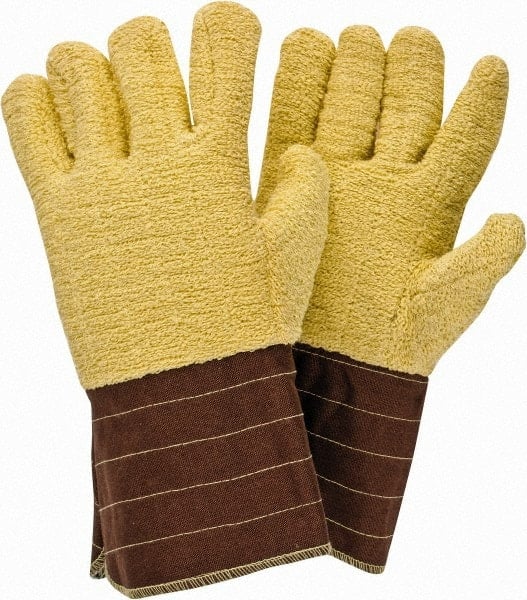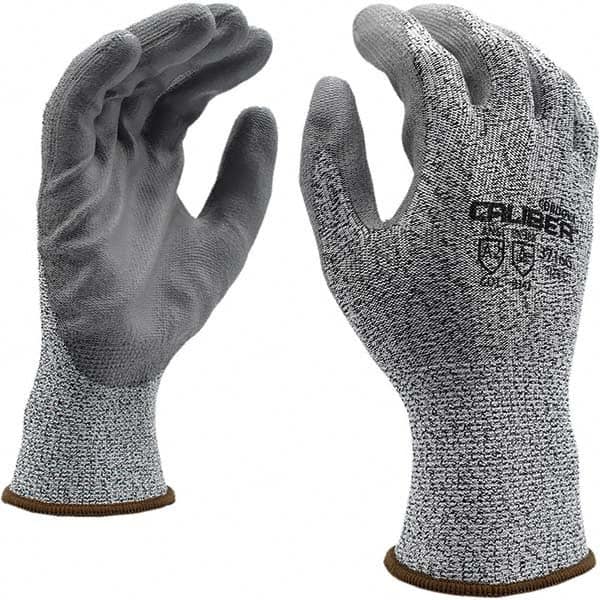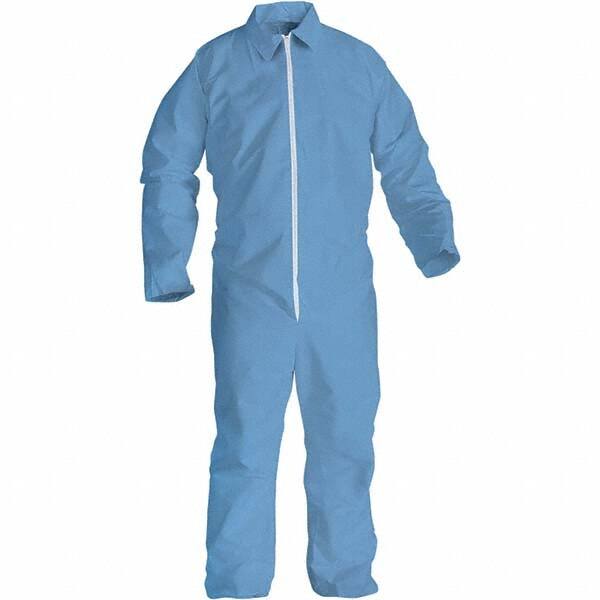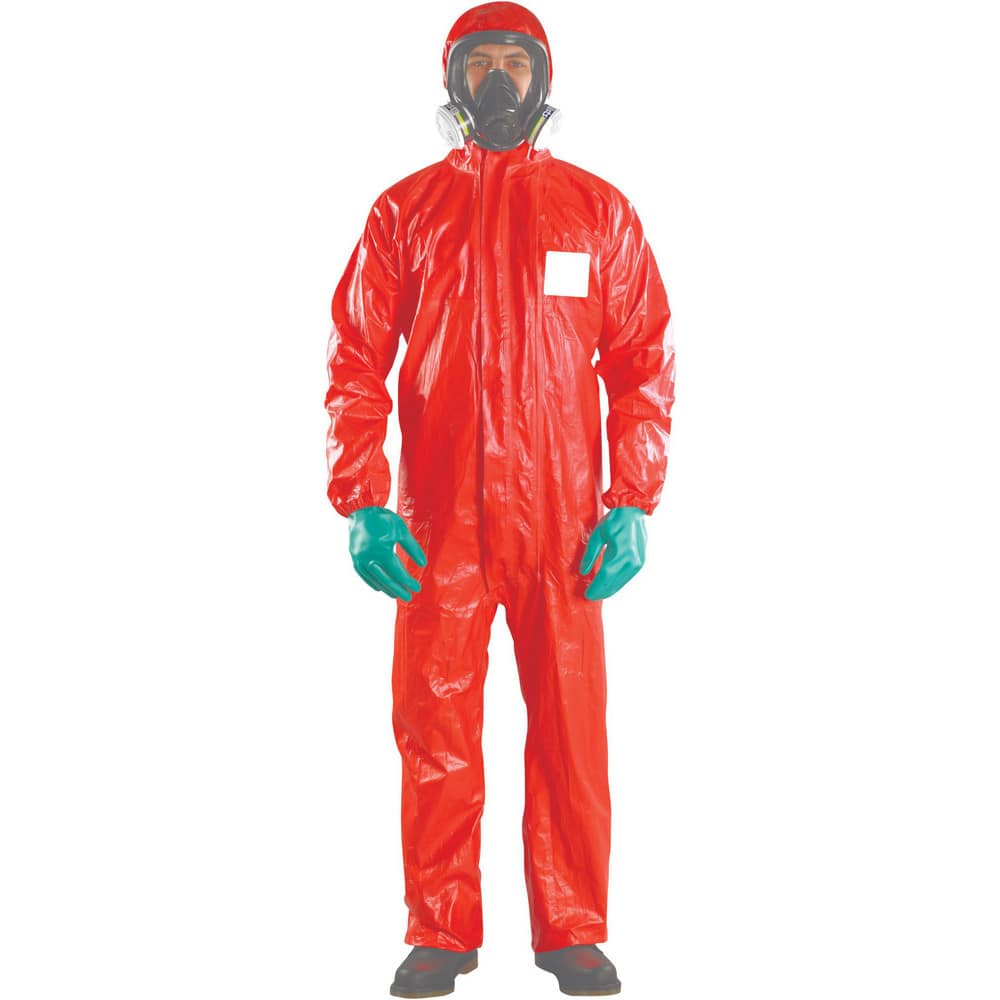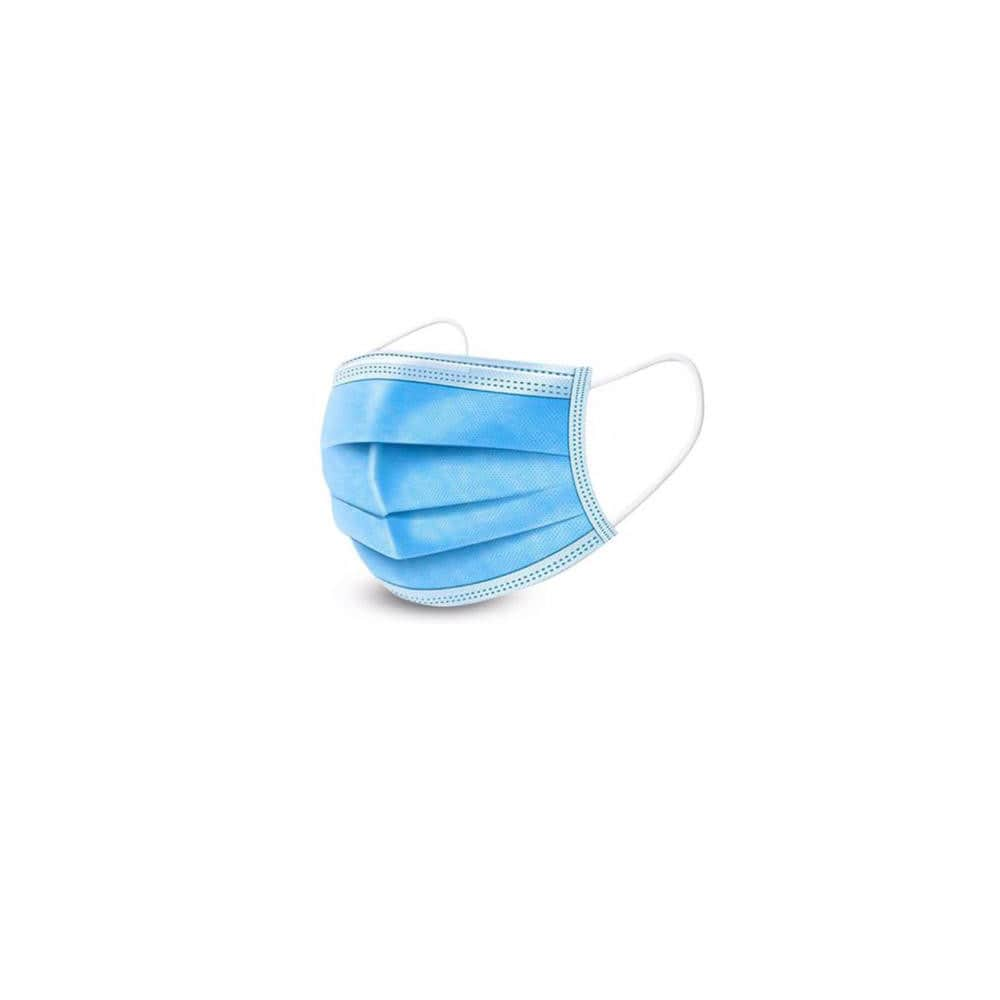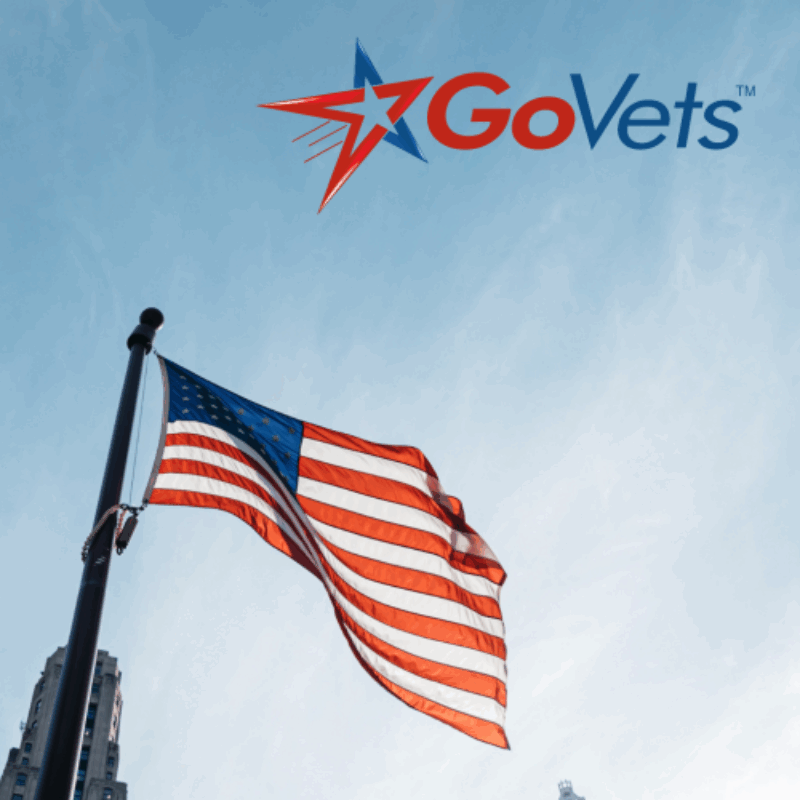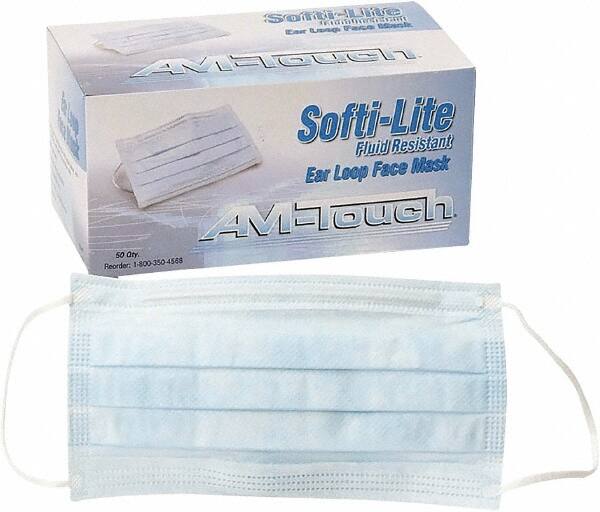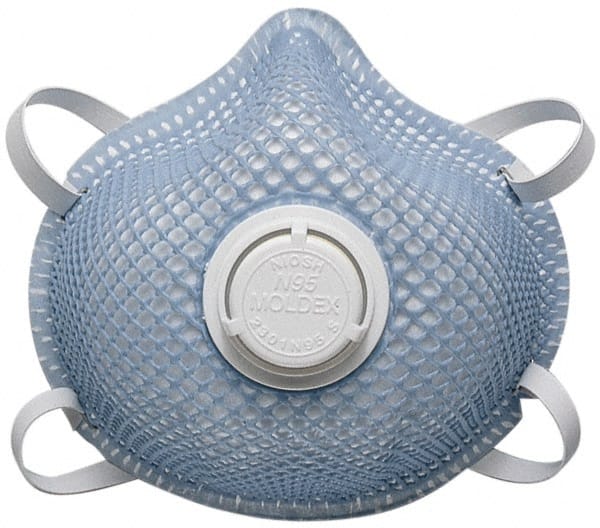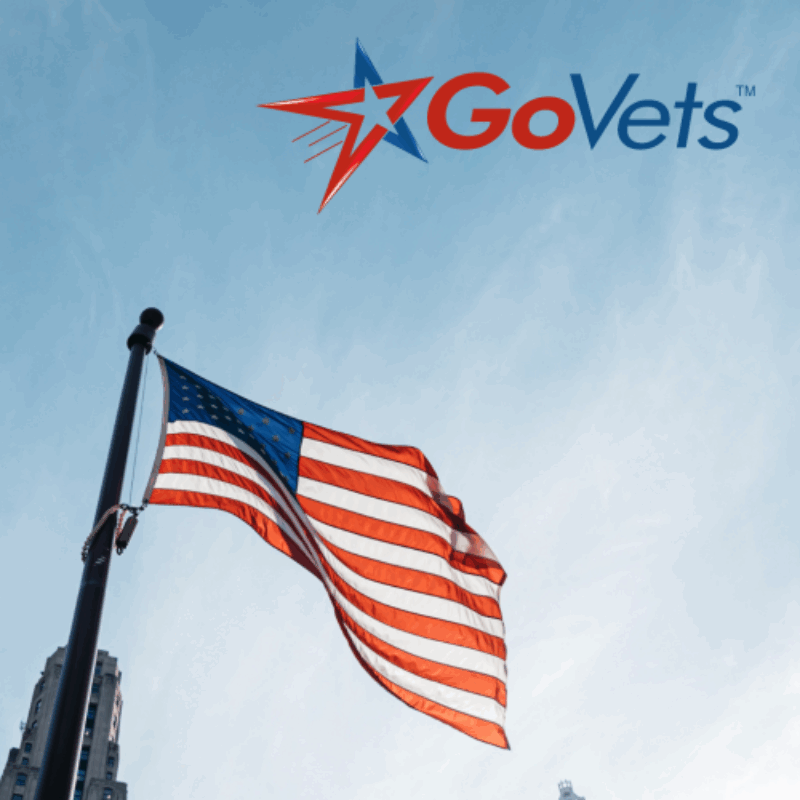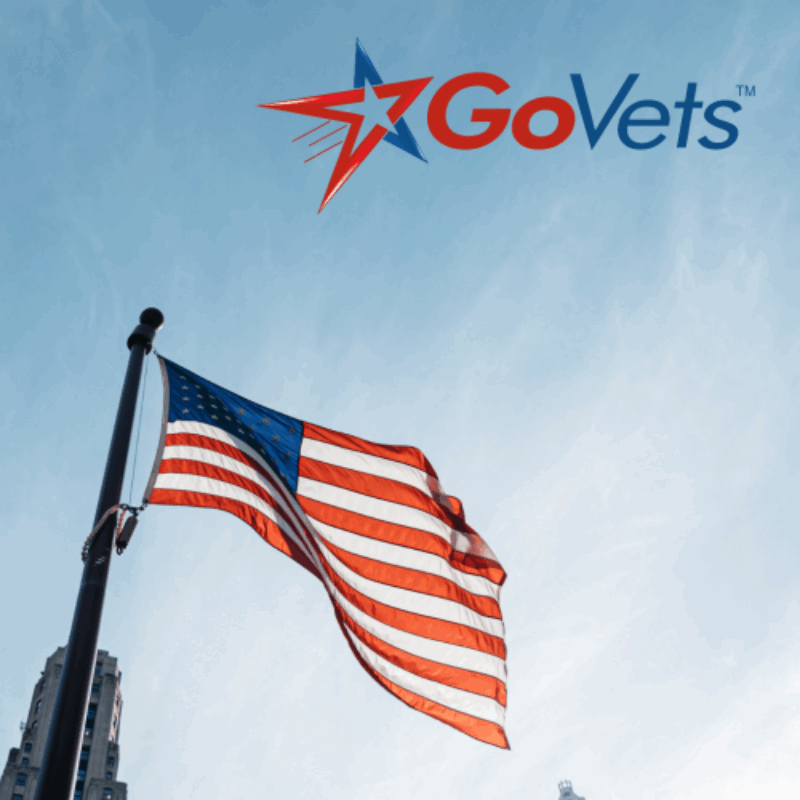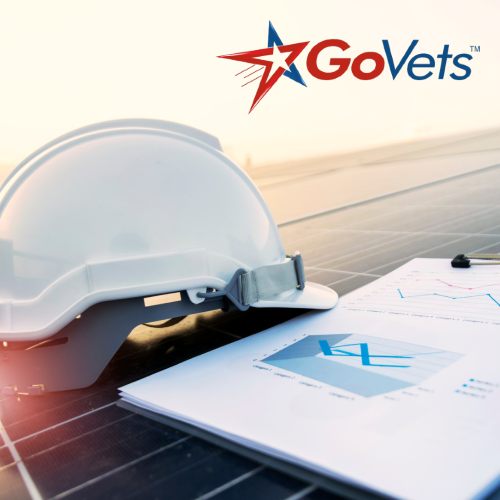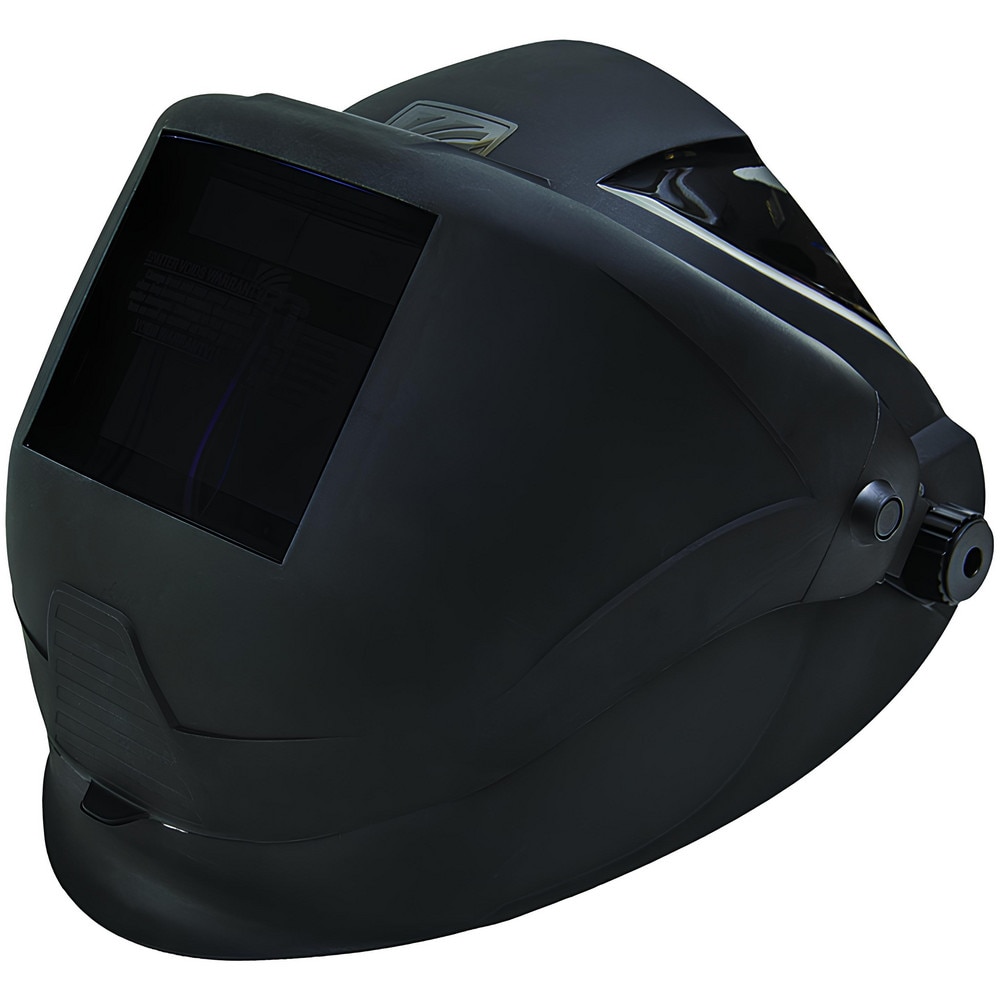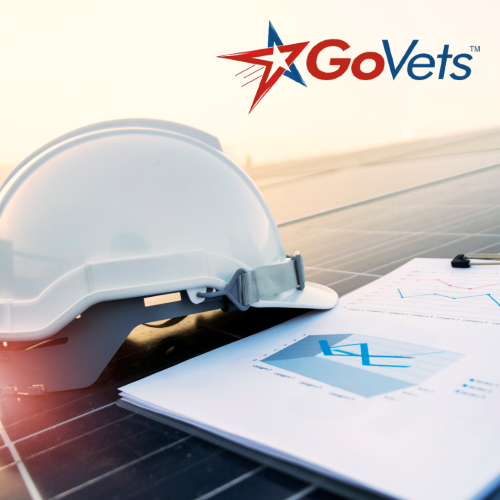Navigating the Fentanyl Crisis: Protection, Prevention, and Response

Overview
In recent years, the United States has been grappling with a formidable adversary—the rising tide of Fentanyl, a potent synthetic opioid that has evolved from a legitimate medical tool into a pervasive and deadly street drug. As communities and individuals face the growing threat of Fentanyl exposure, it becomes paramount to equip ourselves with knowledge and strategies to protect against this epidemic (AMA, Nov 2023). This comprehensive blog post explores the multifaceted aspects of Fentanyl, from its origins to the top ways to minimize risks, and from the importance of personal protective equipment (PPE) to identifying high-risk locations. Let's dive into this crucial topic to understand, prepare, and respond effectively.
Table of Contents
- The Rising Tide of Fentanyl: A Looming Epidemic in the USA
- Protecting Against Fentanyl Exposure: Your Guide to PPE Products
- Dealing with Fentanyl Exposure: Prevention, Identification, and Response
- Identifying High-Risk Locations for Fentanyl Exposure
Part 1 - The Rising Tide of Fentanyl: A Looming Epidemic in the USA
Fentanyl, a synthetic opioid originally developed for medical purposes, has become a menacing force in the United States. Its history in the country is marked by a trajectory that has transformed it from a legitimate medication to a deadly street drug. In this blog, we'll delve into the history of Fentanyl use in the USA and how it has evolved into a serious epidemic.
The Birth of Fentanyl
Fentanyl, first synthesized by Dr. Paul Janssen in Belgium in 1960 (Stanley, American Pain Society, December, 2014) , was introduced to the medical world as a potent and effective pain reliever. It was initially used in clinical settings for severe pain management, such as during surgeries or for patients with cancer experiencing excruciating pain. Due to its high potency, it was intended for short-term, supervised use.
Medical Applications
In the following decades, Fentanyl found its place in the medical field. It was administered through various forms, including patches, lozenges, and injections, to provide relief to patients dealing with severe pain. The pharmaceutical industry produced a range of brand-name formulations, including Duragesic, Actiq, and Sublimaze.
The Unintended Consequences
While Fentanyl proved highly effective in clinical settings, its potency also posed significant risks when misused. The unintended consequences of Fentanyl use began to surface as reports of diversion and abuse increased (What is Fentanyl, National Institute on Drug Abuse, June, 2021).
The Early Signs
In the 1970s, the first signs of Fentanyl abuse emerged as some patients began tampering with patches to extract the drug for recreational use. The risk of overdose was a constant concern, but these early cases were relatively isolated.
The 21st Century Crisis
The 21st century witnessed a troubling shift in the Fentanyl landscape. The opioid crisis, fueled by the overprescription of painkillers like OxyContin and Vicodin, created a growing demand for stronger opioids. Fentanyl, with its high potency, filled that demand. Illicitly manufactured Fentanyl began to flood the black market, leading to a surge in overdoses and fatalities.
The Illicit Market
One of the key factors in the Fentanyl epidemic's rapid escalation was the emergence of the illicit Fentanyl market. This synthetic opioid began to appear in street drugs, including heroin and counterfeit prescription pills, often unbeknownst to users. The consequences were devastating.
Fentanyl-Laced Heroin
Many heroin users unknowingly consumed Fentanyl-laced heroin, leading to a significant increase in overdose deaths. The combination of two potent opioids heightened the risk, as users could easily overdose due to the unpredictability of Fentanyl's potency. (5 things everyone should know about fentanyl, Health & Wellness Services, UColorado, September, 2023).
Counterfeit Pills
Counterfeit prescription pills containing Fentanyl became alarmingly common. These pills, made to resemble legitimate medications, were sold on the streets and dark web. Users who believed they were taking a less potent drug faced fatal consequences.
The Lethality of Fentanyl
Fentanyl's potency cannot be overstated. It is estimated to be 50 to 100 times more potent than morphine and many times more potent than heroin. Even a tiny amount can lead to a lethal overdose. This lethality has made it a formidable adversary in the opioid crisis. (Fentanyl: One Pill Kills, Texas HHS)
Law Enforcement and Legislative Responses
Recognizing the gravity of the situation, law enforcement agencies and lawmakers have taken steps to combat the illicit Fentanyl trade. These efforts have included cracking down on the production and distribution of the drug, as well as increasing penalties for those involved.
The Federal Response
At the federal level, measures have been taken to control the production of Fentanyl precursors and strengthen penalties for trafficking. The SUPPORT Act of 2018, for example, aimed to address the opioid crisis, including the rise of Fentanyl.
State-Level Initiatives
States have also taken action to combat the Fentanyl epidemic. Some have implemented stricter regulations on prescribing opioids, while others have expanded access to naloxone, an opioid overdose reversal medication.
The Ongoing Battle
Despite these efforts, the Fentanyl epidemic continues to take a toll on communities across the USA. Its clandestine nature, high potency, and adaptability make it a formidable adversary. The need for a comprehensive approach that combines law enforcement, healthcare, and addiction treatment is more crucial than ever.
Section Wrap-Up
The history of Fentanyl use in the USA is a cautionary tale of a powerful medication gone rogue. From its legitimate medical applications to its transformation into a lethal street drug, Fentanyl's journey has been marked by tragedy. As the country grapples with the ongoing epidemic, it is clear that a multifaceted approach is needed to address the root causes and save lives. The battle against Fentanyl is far from over, and continued vigilance is essential to combat this deadly threat.
Part 2 - Protecting Against Fentanyl Exposure: Your Guide to PPE Products
In recent years, the opioid crisis has swept across the nation, with Fentanyl being one of the most potent and dangerous substances in the mix. Whether you're a first responder, law enforcement officer, or anyone concerned about potential exposure to Fentanyl or similar hazardous materials, personal protective equipment (PPE) is your first line of defense (Preventing Emergency Responders’ Exposures to Illicit Drugs, CDC, February, 2020). In this comprehensive guide, we will explore various PPE products and how they can help protect you in different situations involving Fentanyl exposure.
Personal Protective Equipment (PPE)
Personal Protective Equipment, commonly known as PPE, encompasses a wide range of gear designed to shield individuals from various hazards. In the context of Fentanyl exposure, PPE is crucial to prevent accidental contact with this potent opioid, which can be life-threatening even in small amounts.
Typical Applications:
- First Responder Operations: First responders, including paramedics and firefighters, require PPE to safely handle potential Fentanyl overdose cases.
- Law Enforcement: Police officers may encounter Fentanyl during drug raids or arrests, necessitating the use of protective gear.
- Medical Professionals: Healthcare workers may use PPE when treating patients who have ingested or been exposed to Fentanyl.
Product Recommendations:
- Personal Protective Equipment
- Eye & Face Protection
- Eyewear Accessories & Storage
- Face Shields & Headgear
- Safety Glasses & Replacement Lenses
- Safety Goggles & Replacement Lenses
- Gloves & Hand Protection
- Glove & Hand Accessories
- Gloves
- Disposable Clothing
- Respiratory Protection
- Disposable Respirators, Masks & Dispensers
- Facepieces, Assemblies & Cartridges
- PAPR & Supplied Air (SAR)
- Respiratory Fit Testing & Personal Monitoring
- Self-Contained Breathing Apparatus (SCBA) & Emergency Escape
Now, let's delve into each of these categories in more detail:
Eye & Face Protection
Eye and face protection gear is essential when working with hazardous substances like Fentanyl. It shields your eyes and face from potential splashes or airborne particles.
Typical Applications:
- First Responder Operations: First responders often need eye and face protection when assisting overdose victims.
- Law Enforcement: Police officers may use these products during drug-related operations.
- Laboratory Work: Scientists working with controlled substances like Fentanyl require this protection.
Product Recommendations: Eye & Face Protection Products
-
DewaltSpecial Price $4.29 Regular Price $7.01This product is sold in increments of 1
-
Pro-SafeSpecial Price $10.29 Regular Price $18.53This product is sold in increments of 1
-
Jackson SafetySpecial Price $2.49 Regular Price $5.07This product is sold in increments of 1
-
3MSpecial Price $9.79 Regular Price $18.63This product is sold in increments of 1
-
3MSpecial Price $5.79 Regular Price $11.47This product is sold in increments of 1
-
BoutonSpecial Price $7.29 Regular Price $12.81This product is sold in increments of 1
-
SellstromSpecial Price $15.29 Regular Price $30.56This product is sold in increments of 1
-
SellstromSpecial Price $15.49 Regular Price $25.76This product is sold in increments of 1
Eyewear Accessories & Storage
Eyewear accessories include items like eyeglass retainers and cleaning solutions. Proper storage is crucial to maintain the integrity of eye protection gear.
Typical Applications:
- Daily Use: Individuals who wear eyeglasses can benefit from these accessories.
- Lab and Research Settings: Scientists and researchers using safety glasses may need these accessories.
- Long-Term Storage: Storing safety goggles and glasses when not in use.
Product Recommendations: Eyewear Accessories & Storage Products
-
3MSpecial Price $38.29 Regular Price $56.83This product is sold in increments of 1
-
Klein ToolsSpecial Price $12.29 Regular Price $15.45This product is sold in increments of 1
-
UvexSpecial Price $10.79 Regular Price $16.76This product is sold in increments of 10
-
ErgodyneSpecial Price $4.29 Regular Price $8.29This product is sold in increments of 1
-
3MSpecial Price $8.99 Regular Price $13.07This product is sold in increments of 1
-
3MSpecial Price $13.29 Regular Price $19.66This product is sold in increments of 1
-
3MSpecial Price $7.29 Regular Price $14.33This product is sold in increments of 1
-
ErgodyneSpecial Price $6.49 Regular Price $10.09This product is sold in increments of 1
Face Shields & Headgear
Face shields offer full-face protection, including the eyes, nose, and mouth. Headgear ensures a secure fit and comfort during prolonged use.
Typical Applications:
- Medical Settings: Healthcare workers dealing with infectious diseases or hazardous materials.
- Chemical Handling: Workers handling dangerous chemicals where full-face protection is necessary.
- Construction: Protection against flying debris and hazards in construction.
Product Recommendations: Face Shields & Headgear Products
-
Jackson SafetySpecial Price $2.49 Regular Price $5.07This product is sold in increments of 1
-
3MSpecial Price $9.79 Regular Price $18.63This product is sold in increments of 1
-
HexarmorSpecial Price $47.99 Regular Price $92.1This product is sold in increments of 1
-
RadiansSpecial Price $8.79 Regular Price $9.72This product is sold in increments of 1
-
OberonSpecial Price $41.49This product is sold in increments of 1
-
McrSpecial Price $12.79 Regular Price $24.69This product is sold in increments of 1
-
3MSpecial Price $105.99 Regular Price $169.69This product is sold in increments of 1
-
SellstromSpecial Price $44.29 Regular Price $59.17This product is sold in increments of 1
Safety Glasses & Replacement Lenses
Safety glasses are a common form of eye protection. Replacement lenses ensure continued use and clear vision.
Typical Applications:
- Industrial Work: Workers exposed to dust, debris, or chemical splashes.
- Sports and Recreation: Safety glasses for activities like shooting sports.
- Laboratory Work: Scientists and researchers using safety glasses.
Product Recommendations: Safety Glasses & Replacement Lenses Products
-
DewaltSpecial Price $4.29 Regular Price $7.01This product is sold in increments of 1
-
3MSpecial Price $5.79 Regular Price $11.47This product is sold in increments of 1
-
Encon Safety ProductsSpecial Price $6.49 Regular Price $13.63This product is sold in increments of 1
-
Encon Safety ProductsSpecial Price $7.49 Regular Price $15.46This product is sold in increments of 1
-
Encon Safety ProductsSpecial Price $6.49 Regular Price $11.62This product is sold in increments of 1
-
Encon Safety ProductsSpecial Price $1.95 Regular Price $2.7This product is sold in increments of 1
-
Encon Safety ProductsSpecial Price $2.49 Regular Price $4.23This product is sold in increments of 1
-
Encon Safety ProductsSpecial Price $5.29 Regular Price $7.37This product is sold in increments of 1
Safety Goggles & Replacement Lenses
Safety goggles provide a sealed eye protection solution, ideal for situations where a tight seal is required.
Typical Applications:
- Chemical Handling: Workers dealing with corrosive substances.
- Medical Procedures: Protective eyewear for healthcare workers during procedures.
- Welding: Eye protection for welders against sparks and debris.
Product Recommendations: Safety Goggles & Replacement Lenses Products
-
Encon Safety ProductsSpecial Price $11.79 Regular Price $21.58This product is sold in increments of 1
-
Encon Safety ProductsSpecial Price $10.99 Regular Price $15.44This product is sold in increments of 1
-
Encon Safety ProductsSpecial Price $11.79 Regular Price $22.52This product is sold in increments of 1
-
Encon Safety ProductsSpecial Price $11.99 Regular Price $19.31This product is sold in increments of 1
-
Encon Safety ProductsSpecial Price $13.29 Regular Price $26.42This product is sold in increments of 1
-
Encon Safety ProductsSpecial Price $8.99 Regular Price $12.37This product is sold in increments of 1
-
Encon Safety ProductsSpecial Price $13.79 Regular Price $31.25This product is sold in increments of 1
-
Encon Safety ProductsSpecial Price $11.49 Regular Price $16.8This product is sold in increments of 1
Gloves & Hand Protection
Hand protection is vital when handling hazardous materials like Fentanyl. Gloves shield your hands from contact.
Typical Applications:
- First Responder Operations: Paramedics and firefighters handling overdose cases.
- Law Enforcement: Police officers during drug-related arrests.
- Chemical Handling: Workers in chemical and pharmaceutical industries.
Product Recommendations: Gloves & Hand Protection Products
-
GenericSpecial Price $35.79 Regular Price $64.53This product is sold in increments of 1
-
GenericSpecial Price $51.79 Regular Price $114.19This product is sold in increments of 1
-
AnsellSpecial Price $54.29 Regular Price $77.13This product is sold in increments of 1
-
Mechanix WearSpecial Price $39.99 Regular Price $70.4This product is sold in increments of 1
-
JomacSpecial Price $50.79 Regular Price $82.36This product is sold in increments of 1
-
Pro-SafeSpecial Price $4.29 Regular Price $10.35This product is sold in increments of 1
-
CordovaSpecial Price $5.29 Regular Price $6.58This product is sold in increments of 12
-
AnsellSpecial Price $2.29 Regular Price $3.49This product is sold in increments of 1
Glove & Hand Accessories
Accessories like glove liners and hand creams enhance comfort and safety when wearing gloves.
Typical Applications:
- Cold Environments: Liners for cold-weather work.
- Moisturizing: Hand creams to prevent skin dryness and irritation.
- Extended Use: Accessories for individuals wearing gloves for long durations.
Product Recommendations: Glove & Hand Accessories Products
-
SalisburySpecial Price $660.79 Regular Price $1246.89This product is sold in increments of 1
-
NovaxSpecial Price $17.49 Regular Price $44.11This product is sold in increments of 1
-
NovaxSpecial Price $16.99 Regular Price $41.45This product is sold in increments of 1
-
Chicago Protective ApparelSpecial Price $30.79 Regular Price $40.25This product is sold in increments of 1
-
SalisburySpecial Price $103.29 Regular Price $167.27This product is sold in increments of 1
-
SalisburySpecial Price $85.49 Regular Price $122.58This product is sold in increments of 1
-
SalisburySpecial Price $89.79 Regular Price $152.85This product is sold in increments of 1
-
EmiSpecial Price $7.99 Regular Price $12.66This product is sold in increments of 1
Gloves
Gloves come in various materials and designs, each suitable for specific applications and hazards.
Typical Applications:
- Latex Gloves: Common in healthcare settings.
- Nitrile Gloves: Chemical resistance for laboratory work.
- Cut-Resistant Gloves: Ideal for handling sharp objects.
Product Recommendations: Gloves Products
-
GenericSpecial Price $35.79 Regular Price $64.53This product is sold in increments of 1
-
GenericSpecial Price $51.79 Regular Price $114.19This product is sold in increments of 1
-
AnsellSpecial Price $54.29 Regular Price $77.13This product is sold in increments of 1
-
Mechanix WearSpecial Price $39.99 Regular Price $70.4This product is sold in increments of 1
-
JomacSpecial Price $50.79 Regular Price $82.36This product is sold in increments of 1
-
Pro-SafeSpecial Price $4.29 Regular Price $10.35This product is sold in increments of 1
-
CordovaSpecial Price $5.29 Regular Price $6.58This product is sold in increments of 12
-
AnsellSpecial Price $2.29 Regular Price $3.49This product is sold in increments of 1
Disposable Clothing
Disposable clothing offers full-body protection against hazardous materials. It is crucial in situations involving Fentanyl exposure.
Typical Applications:
- Cleanrooms: Used in controlled environments to prevent contamination.
- Hazardous Materials Handling: Protection against chemical spills.
- Healthcare: Disposable gowns for infection control.
Product Recommendations: Disposable Clothing Products
-
KleenguardSpecial Price $466.99 Regular Price $762.95This product is sold in increments of 1
-
AnsellSpecial Price $247.29 Regular Price $391.97This product is sold in increments of 1
-
AnsellSpecial Price $247.29 Regular Price $391.97This product is sold in increments of 1
-
AnsellSpecial Price $277.49 Regular Price $439.87This product is sold in increments of 1
-
AnsellSpecial Price $260.99 Regular Price $413.77This product is sold in increments of 1
-
AnsellSpecial Price $247.29 Regular Price $391.97This product is sold in increments of 1
-
AnsellSpecial Price $247.29 Regular Price $391.97This product is sold in increments of 1
-
DupontSpecial Price $521.79 Regular Price $952.38This product is sold in increments of 1
Respiratory Protection
Respiratory protection is essential when working in environments with airborne contaminants, such as Fentanyl.
Typical Applications:
- Chemical Handling: Protection against toxic fumes.
- Healthcare: Preventing the inhalation of infectious agents.
- Construction: Protection against dust and particulate matter.
Product Recommendations: Respiratory Protection Products
-
AllegroSpecial Price $37.49 Regular Price $61.08This product is sold in increments of 1
-
3MSpecial Price $1382.29 Regular Price $2093.88This product is sold in increments of 1
-
3MSpecial Price $459.99 Regular Price $693.67This product is sold in increments of 1
-
3MSpecial Price $1368.49 Regular Price $2161.08This product is sold in increments of 1
-
3MSpecial Price $3431.79 Regular Price $6120.49This product is sold in increments of 1
-
3MSpecial Price $1766.29 Regular Price $2656.26This product is sold in increments of 1
-
Snap-OnSpecial Price $2466.99 Regular Price $3144.72This product is sold in increments of 1
-
Snap-OnSpecial Price $5144.49 Regular Price $6600.93This product is sold in increments of 1
Disposable Respirators, Masks & Dispensers
Disposable respirators and masks provide respiratory protection against airborne hazards.
Typical Applications:
- Construction: Dust and debris protection.
- Healthcare: Preventing the spread of infectious diseases.
- Industrial Settings: Protection against fine particulate matter.
Product Recommendations: Disposable Respirators, Masks & Dispensers Products
-
Good EarthSpecial Price $6.79 Regular Price $10.19This product is sold in increments of 1
-
MoldexSpecial Price $88.79 Regular Price $105.57This product is sold in increments of 1
-
Strax AmericasSpecial Price $302.29 Regular Price $529.39This product is sold in increments of 1
-
3MSpecial Price $382.29 Regular Price $575.1This product is sold in increments of 1
-
MoldexSpecial Price $67.49 Regular Price $110.47This product is sold in increments of 1
-
NorthSpecial Price $24.29 Regular Price $35.04This product is sold in increments of 1
-
MoldexSpecial Price $47.29 Regular Price $81.02This product is sold in increments of 1
-
3MSpecial Price $4.29 Regular Price $5.61This product is sold in increments of 1
Facepieces, Assemblies & Cartridges
Facepieces and cartridges are key components of respirators, providing filtration and protection.
Typical Applications:
- Chemical Handling: Protection against toxic gases.
- Industrial Environments: Filtering out airborne pollutants.
- Emergency Response: Respiratory protection during crises.
Product Recommendations: Facepieces, Assemblies & Cartridges Products
-
AllegroSpecial Price $37.49 Regular Price $61.08This product is sold in increments of 1
-
Facepiece Alcohol Wipe: Non-Woven Cloth, White, Use with Rubber Respirator Facepieces MPN:1001-200PUAllegroSpecial Price $20.79 Regular Price $34.06This product is sold in increments of 1
-
AllegroSpecial Price $63.99 Regular Price $116.76This product is sold in increments of 1
-
AllegroSpecial Price $20.79 Regular Price $34.74This product is sold in increments of 1
-
AllegroSpecial Price $14.49 Regular Price $37.37This product is sold in increments of 1
-
3MSpecial Price $513.49 Regular Price $806.92This product is sold in increments of 1
-
MsaSpecial Price $649.29 Regular Price $914.25This product is sold in increments of 1
-
MsaSpecial Price $683.79 Regular Price $967.25This product is sold in increments of 1
PAPR & Supplied Air (SAR)
Powered Air-Purifying Respirators (PAPR) and Supplied Air Respirators (SAR) provide continuous clean air for the wearer.
Typical Applications:
- Hazardous Materials Handling: Protection against toxic gases.
- Healthcare: Enhanced respiratory protection in infectious disease settings.
- Industrial Work: Protection in environments with limited air supply.
Product Recommendations: PAPR & Supplied Air (SAR) Products
-
3MSpecial Price $4804.49 Regular Price $7929.06This product is sold in increments of 1
-
WalterSpecial Price $1156.29 Regular Price $1866.72This product is sold in increments of 1
-
WalterSpecial Price $309.29 Regular Price $494.78This product is sold in increments of 1
-
AllegroSpecial Price $1800.79 Regular Price $3841.27This product is sold in increments of 1
-
AllegroSpecial Price $2135.99 Regular Price $3975.64This product is sold in increments of 1
-
AllegroSpecial Price $65.99 Regular Price $107.19This product is sold in increments of 1
-
AllegroSpecial Price $48.49 Regular Price $82.58This product is sold in increments of 1
-
AllegroSpecial Price $129.29 Regular Price $237.55This product is sold in increments of 1
Respiratory Fit Testing & Personal Monitoring
Fit testing ensures that respiratory protection gear fits properly, while personal monitoring tracks air quality.
Typical Applications:
- Occupational Health: Ensuring workers have a secure fit for their respirators.
- Emergency Response: Monitoring air quality in disaster scenarios.
- Healthcare: Ensuring the safety of healthcare professionals.
Product Recommendations: Respiratory Fit Testing & Personal Monitoring Products
-
Snap-OnSpecial Price $2466.99 Regular Price $3144.72This product is sold in increments of 1
-
Snap-OnSpecial Price $5144.49 Regular Price $6600.93This product is sold in increments of 1
-
Snap-OnSpecial Price $5832.79 Regular Price $7484.34This product is sold in increments of 1
-
Snap-OnSpecial Price $678.79 Regular Price $818.86This product is sold in increments of 1
-
Snap-OnSpecial Price $905.29 Regular Price $1094.29This product is sold in increments of 1
-
Snap-OnSpecial Price $5404.79 Regular Price $6934.91This product is sold in increments of 1
-
Snap-OnSpecial Price $799.49 Regular Price $1094.29This product is sold in increments of 1
-
Snap-OnSpecial Price $132.29 Regular Price $179.46This product is sold in increments of 1
Self-Contained Breathing Apparatus (SCBA) & Emergency Escape
SCBA provides a self-contained air supply, vital in life-threatening situations, while emergency escape devices facilitate rapid evacuation.
Typical Applications:
- Firefighting: SCBA for firefighters entering burning structures.
- Confined Spaces: Ensuring air supply in tight, hazardous spaces.
- Emergency Evacuation: Devices for rapid escape in emergencies.
Product Recommendations: Self-Contained Breathing Apparatus (SCBA) & Emergency Escape Products
-
MsaSpecial Price $238.99 Regular Price $294.62This product is sold in increments of 1
-
AllegroSpecial Price $624.79 Regular Price $837.34This product is sold in increments of 1
-
MsaSpecial Price $1325.49 Regular Price $1509.29This product is sold in increments of 1
-
Air Systems InternationalSpecial Price $3394.79 Regular Price $7111.17This product is sold in increments of 1
-
Air Systems InternationalSpecial Price $3350.79 Regular Price $6976.76This product is sold in increments of 1
-
Air Systems InternationalSpecial Price $568.79 Regular Price $1026.35This product is sold in increments of 1
-
Air Systems InternationalSpecial Price $3173.99 Regular Price $6860.99This product is sold in increments of 1
-
Air Systems InternationalSpecial Price $1360.99 Regular Price $2953.14This product is sold in increments of 1
Section Wrap-Up:
In the face of the Fentanyl crisis and similar hazards, protecting yourself with the right PPE is essential. The comprehensive range of products available in these categories ensures that you can find the right gear to safeguard against Fentanyl exposure and other dangerous substances. Stay safe, stay protected.
Part 3 - Dealing with Fentanyl Exposure: Prevention, Identification, and Response
Introduction: Fentanyl, a powerful synthetic opioid, poses a significant risk to individuals and communities across the United States. It's crucial to know what to do when your location is exposed to Fentanyl use and how to respond if someone is exposed to it. This comprehensive guide will address the symptoms of Fentanyl exposure, how to identify if your location has been exposed, and the top ways to minimize both the risks of exposure and its potential impacts.
Symptoms of Fentanyl Exposure
Recognizing the symptoms of Fentanyl exposure is the first step in addressing this dangerous situation. Exposure can occur through inhalation, skin contact, or ingestion, and the symptoms can vary in severity. Common symptoms include:
1. Respiratory Distress
- Shallow or labored breathing
- Slow or irregular heartbeat
- Cyanosis (bluish skin or lips)
- Respiratory failure (in severe cases)
2. Confusion and Altered Mental State
- Disorientation
- Dizziness
- Delirium
- Loss of consciousness
3. Nausea and Vomiting
- Nausea
- Vomiting
- Loss of appetite
4. Pinpoint Pupils
- Constricted pupils (pinpoint)
- Lack of reaction to light
5. Muscle Weakness
- Muscle weakness or paralysis
- Difficulty moving
- Loss of coordination
6. Hypotension
- Low blood pressure
- Fainting
7. Skin Irritation
- Skin rash
- Itching
- Redness or irritation (if Fentanyl comes into contact with the skin)
Identifying Fentanyl Exposure in Your Location
Detecting Fentanyl exposure in your environment is critical for ensuring safety. Here's how to identify if your location has been exposed to Fentanyl:
1. Suspicious Powders or Residues
If you encounter unknown powders or substances, do not touch or handle them. Contact law enforcement immediately.
2. Drug Paraphernalia
The presence of drug paraphernalia like needles, pipes, or pill bottles may indicate illicit drug use, including Fentanyl.
3. Unusual Odors
Fentanyl has a distinctive, sweet odor. If you detect an unusual scent, especially in enclosed spaces, exercise caution.
4. Signs of Drug Manufacturing
Unusual equipment or chemicals in a location, such as a strong chemical odor or makeshift laboratories, may indicate Fentanyl production.
5. Overdose Incidents
An increase in opioid overdose cases in your area may signal the presence of Fentanyl. Stay informed about local health reports and news.
Minimizing Risks of Fentanyl Exposure
Prevention is key in minimizing the risks of Fentanyl exposure. Whether you're an individual or responsible for a location, consider these measures:
1. Avoid Suspicious Substances
Never touch or handle unknown substances, especially powders. If you encounter something suspicious, contact the authorities.
2. Educate Yourself
Learn about the dangers of Fentanyl, its symptoms, and how to respond to potential exposure. Knowledge is your best defense.
3. Naloxone Availability
Naloxone, an opioid overdose reversal medication, can save lives if administered promptly. Ensure that it's readily available in your location, especially if you're in an area with a higher risk of exposure.
4. Protective Gear
If you work in a field where Fentanyl exposure is a risk (e.g., law enforcement, healthcare), use appropriate protective gear, including gloves, masks, and eyewear.
5. Ventilation
Properly ventilate enclosed spaces to reduce the concentration of airborne particles, if you suspect Fentanyl exposure.
6. Drug Testing Kits
Consider using drug testing kits if you're concerned about substances in your location. These kits can detect the presence of opioids, including Fentanyl.
Minimizing Impacts/Damages of Potential Fentanyl Exposure
If you suspect Fentanyl exposure has occurred in your location or someone has been exposed, taking immediate action is crucial. Here are the steps to minimize the impacts and damages:
1. Evacuate and Ventilate
If you suspect Fentanyl exposure in a confined space, evacuate the area immediately. Ventilate the space by opening windows and doors.
2. Call for Help
If someone exhibits symptoms of Fentanyl exposure, call 911 or emergency services. Time is critical in responding to overdoses.
3. Administer Naloxone
If you have naloxone available and are trained to use it, administer the medication as directed on the packaging.
4. Perform CPR
If the person stops breathing or their heartbeat becomes irregular or stops, perform CPR until emergency medical personnel arrive.
5. Decontaminate
If there is a risk of skin exposure, remove contaminated clothing and wash the affected area thoroughly with soap and water.
6. Follow Medical Advice
Once emergency responders arrive, follow their instructions and provide any relevant information about the suspected exposure.
7. Seek Support
If you or someone you know has been exposed to Fentanyl, seek support from healthcare professionals, addiction specialists, or counselors. Overcoming the trauma of exposure and addressing potential substance use disorders is essential.
Section Wrap-Up
Dealing with Fentanyl exposure requires vigilance, education, and immediate action. By recognizing the symptoms of exposure, identifying potential risks in your location, and taking preventive measures, you can reduce the likelihood of exposure. In the event of exposure, knowing how to respond promptly can save lives and minimize the impact on individuals and communities. Stay informed, stay safe, and support those affected by this ongoing crisis.
Part 4 - Identifying High-Risk Locations for Fentanyl Exposure
The widespread prevalence of Fentanyl in the illicit drug market has posed a significant public health challenge in the United States. To address this crisis effectively, it's essential to identify and understand the locations at the highest risk of Fentanyl exposure. (Fentanyl Exposure in Public Places, WA State DOH). In this section, we will delve into the top 25 locations that face a heightened risk of being exposed to Fentanyl use.
1. Urban Areas
Large metropolitan areas, such as New York City, Los Angeles, and Chicago, are among the highest risk locations for Fentanyl exposure due to their dense populations and drug market activity.
2. Major Drug Trafficking Routes
Cities situated along major drug trafficking routes, like Atlanta and Miami, often see a higher prevalence of Fentanyl due to its transit through these areas.
3. Border States
States that share a border with Mexico, such as Arizona, New Mexico, and Texas, are exposed to Fentanyl due to the proximity of drug cartels and trafficking routes.
4. Appalachia
The Appalachian region, including West Virginia and Kentucky, has been significantly affected by the opioid crisis, making it vulnerable to Fentanyl exposure.
5. Rust Belt Cities
Cities in the Rust Belt, including Cleveland, Detroit, and Pittsburgh, have experienced economic downturns and high unemployment rates, contributing to the opioid epidemic and Fentanyl risk.
6. Northeast Corridor
The densely populated Northeast Corridor, running from Boston to Washington, D.C., is a high-risk area due to its drug market and transportation networks.
7. Pacific Northwest
Cities like Seattle and Portland in the Pacific Northwest have seen an increase in Fentanyl-related deaths, highlighting the issue's reach.
8. Rural Communities
Rural areas across the country, particularly in states like Ohio and Pennsylvania, face Fentanyl exposure due to limited access to healthcare and addiction treatment.
9. College Campuses
College towns and campuses are not immune to Fentanyl exposure, as young adults may experiment with drugs, leading to potential risks.
10. Entertainment Districts
Areas with vibrant nightlife, like Las Vegas and New Orleans, often see higher Fentanyl exposure risks due to drug use in these settings.
11. Homeless Populations
Cities with large homeless populations, such as San Francisco and Los Angeles, have a higher risk of Fentanyl exposure among marginalized individuals.
12. Prisons and Jails
Correctional facilities, such as those in Texas and Florida, face challenges in preventing Fentanyl from entering prisons.
13. Native American Reservations
Native American reservations, particularly in the Southwest, struggle with Fentanyl exposure issues due to limited resources and healthcare disparities.
14. Suburban Communities
Suburban areas surrounding major cities, like New Jersey and Massachusetts suburbs, are not immune to Fentanyl exposure, with some experiencing opioid-related crises.
15. Tourist Destinations
Tourist destinations like Orlando and Las Vegas can also be at risk, as visitors may unknowingly encounter Fentanyl-laced drugs.
16. Industrial Towns
Industrial towns, such as Akron and Youngstown, face Fentanyl risks due to economic challenges and a history of opioid addiction.
17. Military Bases
Military bases across the country, like Fort Bragg and Fort Hood, are not exempt from Fentanyl exposure risks.
18. Ports of Entry
Cities with major ports of entry, including San Diego and El Paso, are vulnerable to Fentanyl trafficking.
19. Manufacturing Hubs
Manufacturing hubs, such as Indianapolis and Detroit, can be affected by Fentanyl exposure due to drug distribution networks.
20. Oil and Gas Boomtowns
Cities that experience oil and gas booms, like Midland and Williston, often see an influx of transient workers and drug-related challenges.
21. Beach Communities
Coastal communities, including Miami Beach and Venice Beach, are at risk due to drug trade along coastal routes.
22. Midwest Farming Communities
Farming communities in the Midwest, such as Iowa and Nebraska, face Fentanyl exposure issues tied to agricultural and industrial labor.
23. Retirement Communities
Retirement communities in states like Florida and Arizona have not been immune to the opioid epidemic, increasing Fentanyl risks among older populations.
24. Transit Hubs
Cities with major transit hubs, like Denver and Philadelphia, may see a higher prevalence of Fentanyl due to drug transit through transportation networks.
25. Tribal Lands
Native American tribal lands, particularly in the Dakotas and Montana, struggle with Fentanyl exposure due to socioeconomic disparities and limited access to healthcare.
Section Wrap-Up
Understanding the locations at the highest risk of Fentanyl exposure is crucial for directing resources, prevention efforts, and addiction treatment programs. While these 25 locations are among the most vulnerable, the Fentanyl crisis is a nationwide issue that requires a comprehensive and coordinated response from communities, healthcare systems, and law enforcement agencies to mitigate its devastating effects.
Final Thoughts
The Fentanyl crisis is an ever-evolving challenge that demands our collective attention and action. From its historical roots in medicine to its illicit and lethal presence in our communities, Fentanyl poses a serious threat. However, knowledge is our greatest ally. By understanding the history, risks, and symptoms of Fentanyl exposure, as well as adopting protective measures and knowing how to respond effectively, we can navigate this crisis with greater resilience.
It is crucial to remember that the Fentanyl epidemic affects individuals, families, and entire communities. Seeking support, promoting awareness, and advocating for policies that address the root causes of addiction are all essential steps in combating this ongoing crisis. Together, we can work towards a safer and healthier future for all.
Explore all PPE Products on GoVets:
As we navigate through challenging health crises, the importance of Personal Protective Equipment (PPE) cannot be overstated. At GoVets, we offer a comprehensive range of PPE products designed to meet your protection needs. From high-quality masks and gloves to advanced goggles and protective clothing, our selection caters to various requirements for individuals and organizations alike. We invite you to explore our full range of PPE products on GoVets, where you can find the right tools to safeguard yourself and your community. Trust in GoVets to equip you with the best in safety and preparedness.
-
GenericSpecial Price $35.79 Regular Price $64.53This product is sold in increments of 1
-
GenericSpecial Price $51.79 Regular Price $114.19This product is sold in increments of 1
-
DewaltSpecial Price $4.29 Regular Price $7.01This product is sold in increments of 1
-
DunlopSpecial Price $25.99 Regular Price $48.23This product is sold in increments of 1
-
Pro-SafeSpecial Price $10.29 Regular Price $18.53This product is sold in increments of 1
-
AnsellSpecial Price $54.29 Regular Price $77.13This product is sold in increments of 1
-
Mechanix WearSpecial Price $39.99 Regular Price $70.4This product is sold in increments of 1
-
JomacSpecial Price $50.79 Regular Price $82.36This product is sold in increments of 1
- Navigating Crisis: A Guide to Vital Supplies for Migrant Humanitarian Support
- Conquer the Cold: Your Winter Weather Prep Guide to Avoid the Blizzard Crisis
- Prepare Today, Not Tomorrow: Your Comprehensive Guide to Emergency Preparedness
- Stay Prepared with NOAA: Essential Emergency Supplies for Every Natural Disaster
- Essential Supplies for Emergency Readiness
- Veteran Spotlight
- GoVets Solutions
- Buying Guides & Projects
- Shopping Trends
- Prime Contractor Resources
- Business & Entrepreneur Resources
- GoVets Giving
- Online Security and Shopping Safety
- GoVets Top Selling Products
- Veteran Resources
- Product Spotlights
- Technology Updates
- GoVets Medallion Updates
- Government Updates
- GoVets Capabilities
- Press Releases
- Promotion Updates
- Industry Trends



